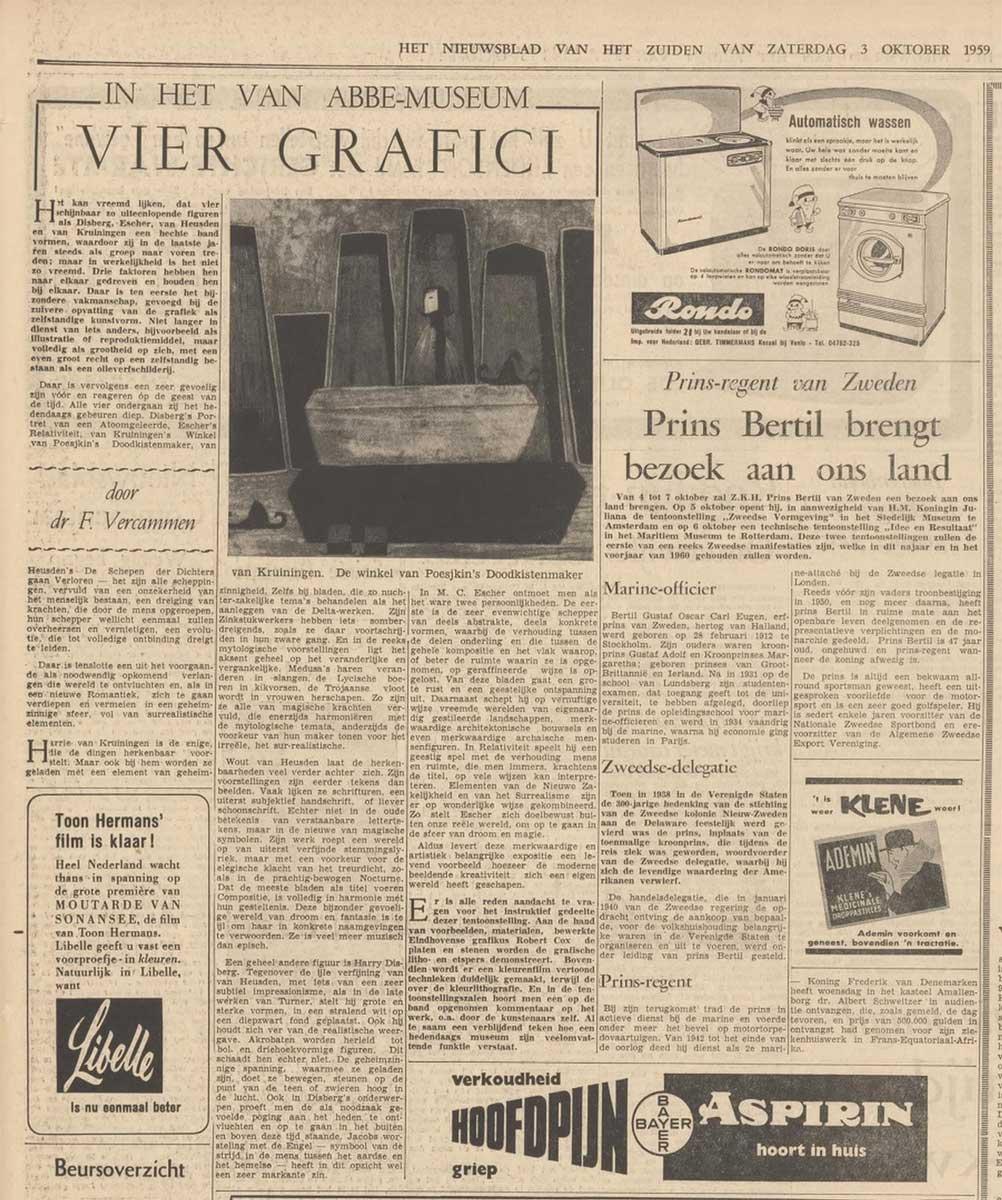
Graphic Grandeur
We use cookies and similar technologies on this website to analyze visits and to show you relevant messages on social media. By clicking 'Accept all' you give permission for their placement and for the processing of personal data obtained in this way, as stated in our privacy & cookie statement.
Our privacy & cookie statement:
Below you can choose which types of cookies you allow on the Escher in The Palace website.

On 2 July 1965, journalist, poet, critic and essayist G.H. 's-Gravesande, known by his nickname Hein, died. Although Escher and Hein had been friends for over 30 years, the artist did not attend the cremation. He was engrossed in working on the print Knots, a subject in which he had become completely absorbed *. This would hardly have surprised 's-Gravesande. He published several articles and a booklet on the man whom he also greatly admired as an artist. Hein 's-Gravesande was one of the first critics to pay serious attention to the work of M.C. Escher, and the graphic artist owes much to him.
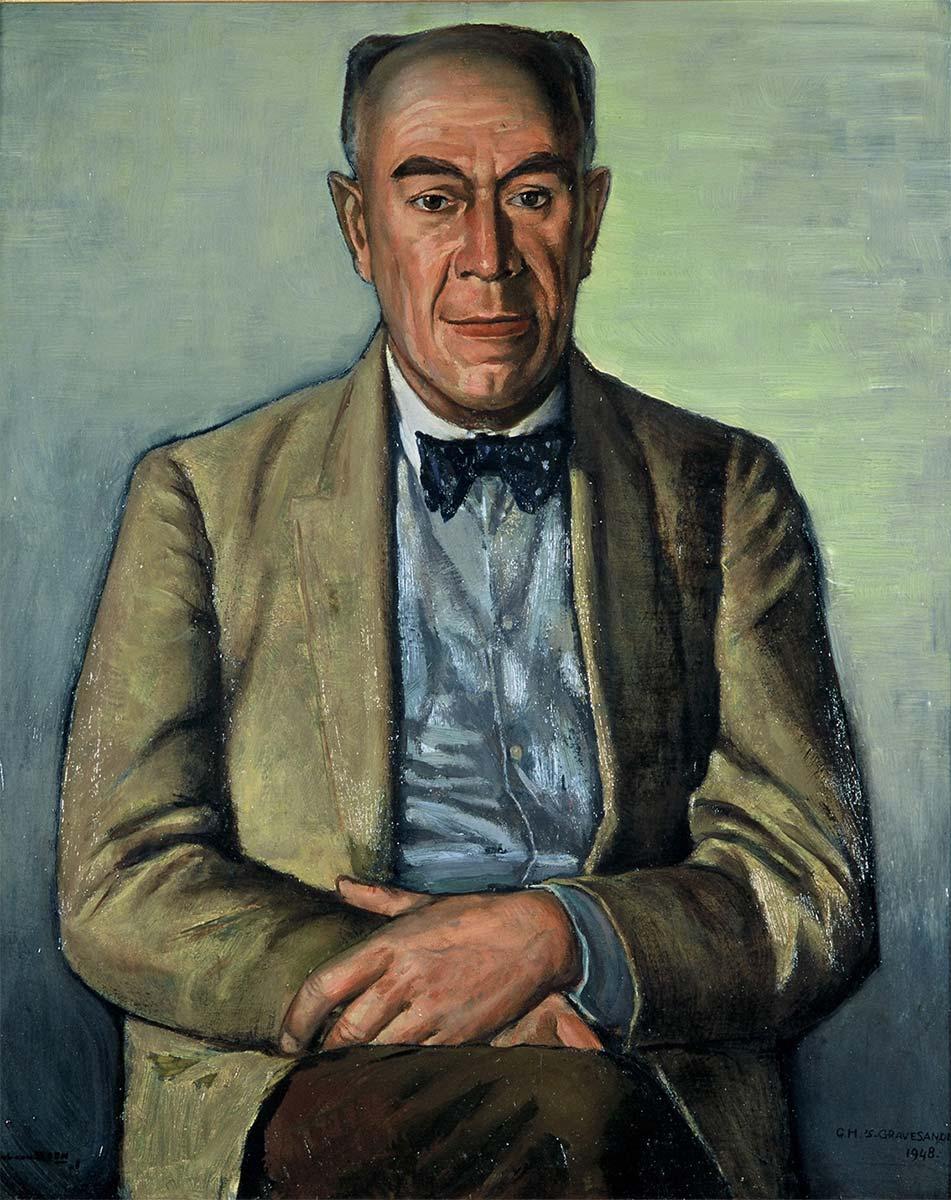
Hein 's-Gravesande was born Goverdus Henricus Pannekoek in Buitenzorg in the former Dutch East Indies on 18 January 1882. He came to the Netherlands with his parents at the age of six, first to Haarlem and later to The Hague. From a young age he aspired to write, with this ambition later being nurtured by his friendship with Jan Greshoff, who was six years younger. In 1904, he started working as a general proofreader and reporter for the liberal newspaper Het Vaderland in The Hague. Although as a sports enthusiast he himself was a goalie for The Hague football club Quick for many years, and in 1925 was even the founder and editor-in-chief of Chantecler, Quick's official magazine, he would become best known as an art journalist. The art section of Het Vaderland was highly regarded over that period, and its reputation was further enhanced by the arrival in 1933 of Menno ter Braak, a man whose talents were as wide-ranging as those of 's-Gravesande and with whom he would develop a close relationship. In 1947, he retired as editor of Het Vaderland, for which he received the knighthood of Orange-Nassau. However, he remained a staff member of the newspaper.
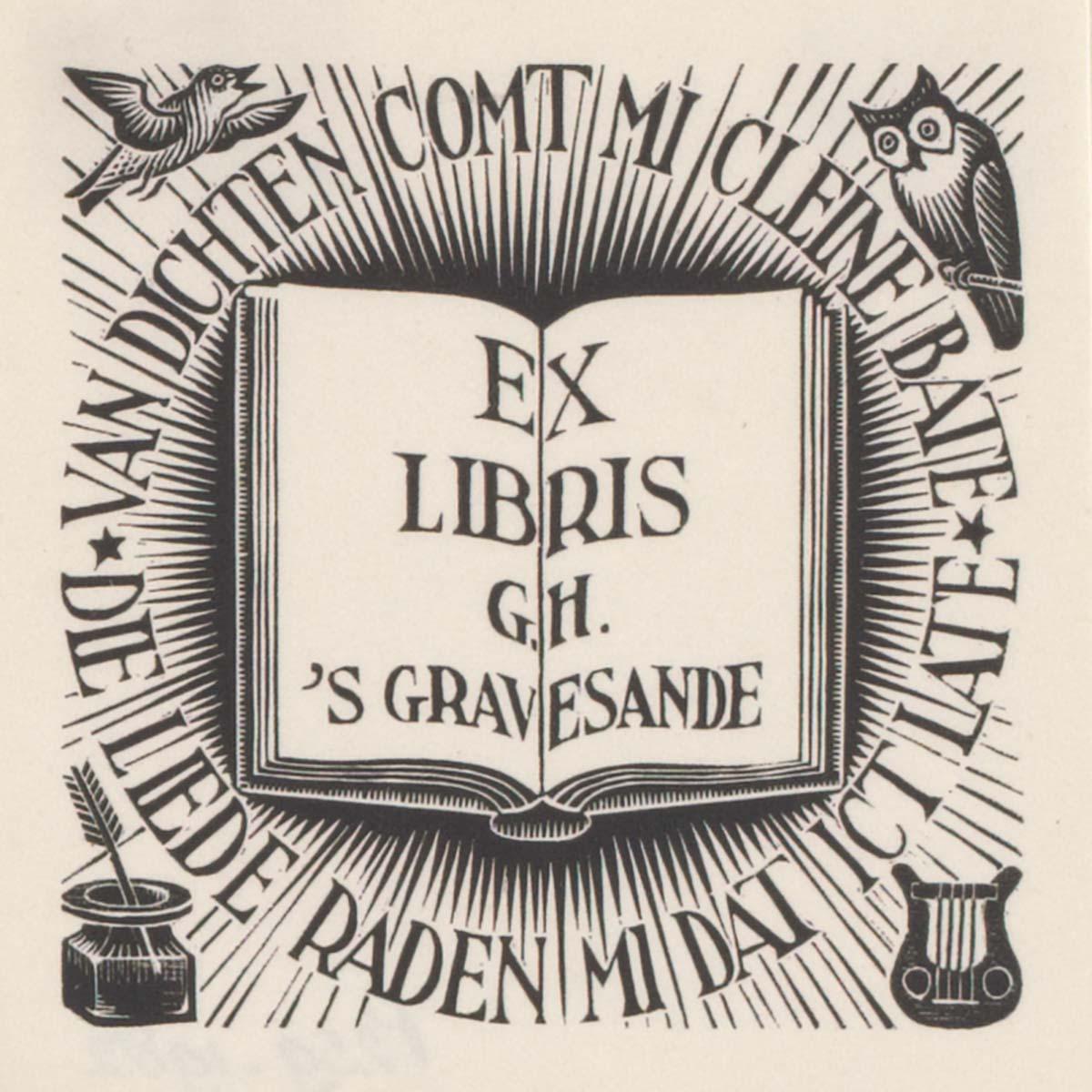
He had the following to say on his years with Het Vaderland:
'I am terribly unimportant, but the only thing I am proud of is that I have been art editor con amore for many years. I have seen many people start with enthusiasm; I consider it my only merit that my enthusiasm has not waned'.
For decades, 's-Gravesande carved out a career for himself as an art journalist, a profession he defined very broadly. He wrote biographies and memoirs about authors such as Jakobus Cornelis Bloem, Jan Jacob Slauerhoff, Jan Campert, Edgar du Perron, Adriaan Roland Holst, Martinus Nijhoff, Arthur van Schendel as well as his colleague and friend Menno ter Braak. For the monthly magazine Den Gulden Winckel, he interviewed a whole series of well-known writers in the 1920s and 1930s, some of these interviews appearing in book form in 1935 (Sprekende schrijvers ). He wrote a whole series of bibliographies, essays on visual and graphic art and literature and several anthologies of poets. He made his debut as a poet as far back as 1902 with verses published in the magazine De Arbeid (Labour). In 1909 his poem Sneeuwlandschap (Snowy Landscape) appeared in print, and he published his first collection in 1911. He would continue writing poems until well after his retirement, though he would never really become famous for them. He was also a bibliophile, a lover of books as desirable collector's items. 's-Gravesande could greatly enjoy a beautiful print or a special typography. Hence, he also wrote several essays on the state of printing and engraving.
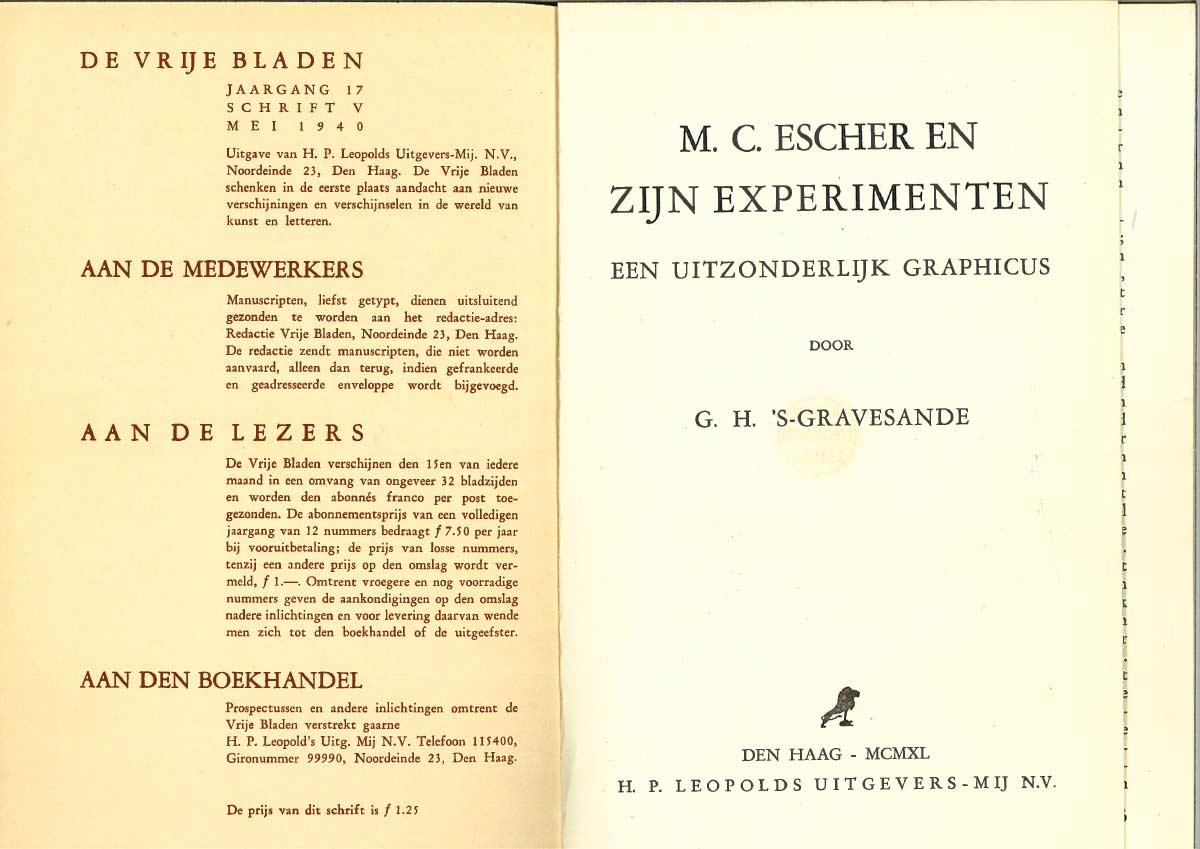
's-Gravesande first saw the work of Escher when the Emblemata series appeared in book form in the summer of 1932. He decided to visit Escher while he was staying with his parents in The Hague **. Shortly afterwards, he gave a lecture on graphic art on the occasion of the opening of the Joh. D. Scherft art gallery on Laan van Meerdervoort in The Hague ***. Escher was also featured at the opening exhibition, and 's-Gravesande praised his work. A year later, on 28 October 1933, he returned to the same gallery to open a solo exhibition on Escher, once again singing the praises of his prints ****. He continued following Escher over the ensuing years. In 1938, he wrote an article on Escher in Elsevier's Maandschrift, followed in 1940 by the book M.C. Escher en zijn experimenten. Een uitzonderlijk graficus (M.C. Escher and his Experiments. An Exceptional Graphic Artist.) In the latter publication, he discusses the life and work of Escher extensively, analysing several prints in detail, including the Emblemata series, Development I and II, Metamorphosis II, Sky and Water I and II and Cycle. This was the second publication confirming Escher’s artistic credibility and place in the art world, following art historian G.J. Hoogewerff’s laudatory article on him in Elsevier's Maandschrift in 1931. In his own text, 's-Gravesande displays an excellent understanding of the themes that fascinated Escher. That insight was undoubtedly aided by the personal bond that the two had built by this point.
M.C. Escher and Hein 's-Gravesande maintained a long friendship, which began in 1932 and lasted until the death of 's-Gravesande more than 30 years later. Over the years, they continued to see each other regularly and wrote each other many letters, not only corresponding on personal experiences but also discussing the individual prints that Escher was working on at the time. In his letters, the graphic artist would express doubts about a subject or technique he was using. In addition, 's-Gravesande regularly got to hear about the time it was taking Escher to print all his woodblocks himself, leaving little time for new prints. When 's-Gravesande moved to Bilthoven in 1952, Escher visited him more often. The two-hour walk was a great opportunity for him to stretch his legs. Hein 's-Gravesande became the person Escher could always turn to. A trusted confidant for the graphic artist who sometimes found himself struggling.
After the death of 's-Gravesande, Escher wrote to his daughter *****:
'Our first contact in 1932 soon developed into a close friendship. I can still see him sitting at his desk in the noisy, brightly lit "hutch" in the "Vaderland", which he shared with Menno ter Braak. I also often visited him on Valkenboschkade and we never lost touch, not even when he retreated into the woods of Bilthoven. Many times, though not often enough, I visited him there, that lonely stoic, hard on himself, rejecting outside help, but always warm-hearted and keenly interested in the outside world.'
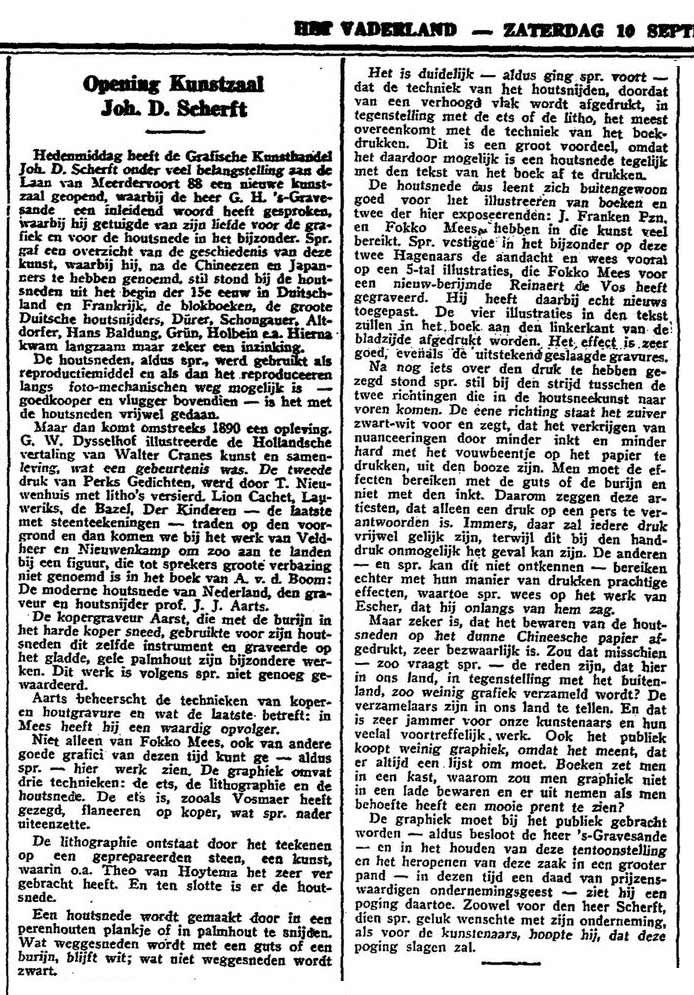


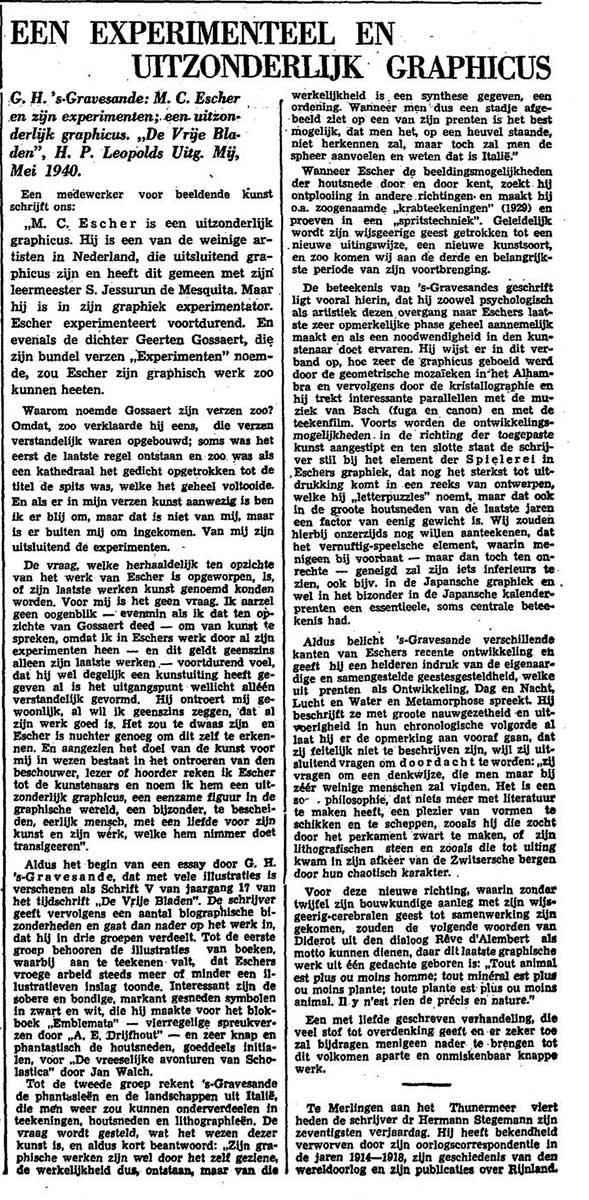
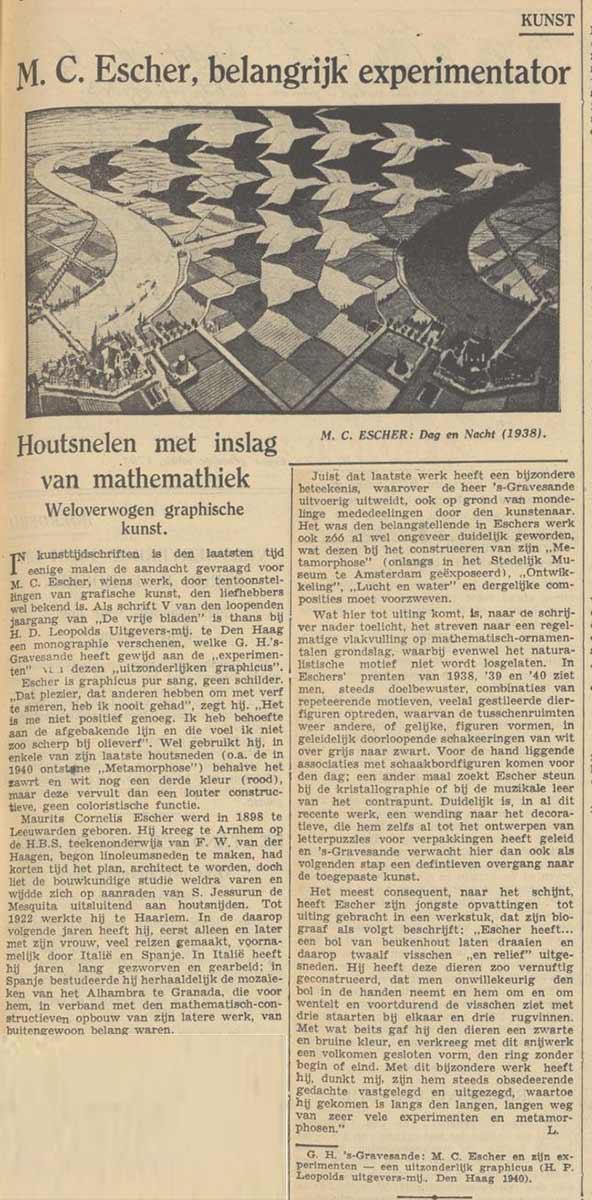
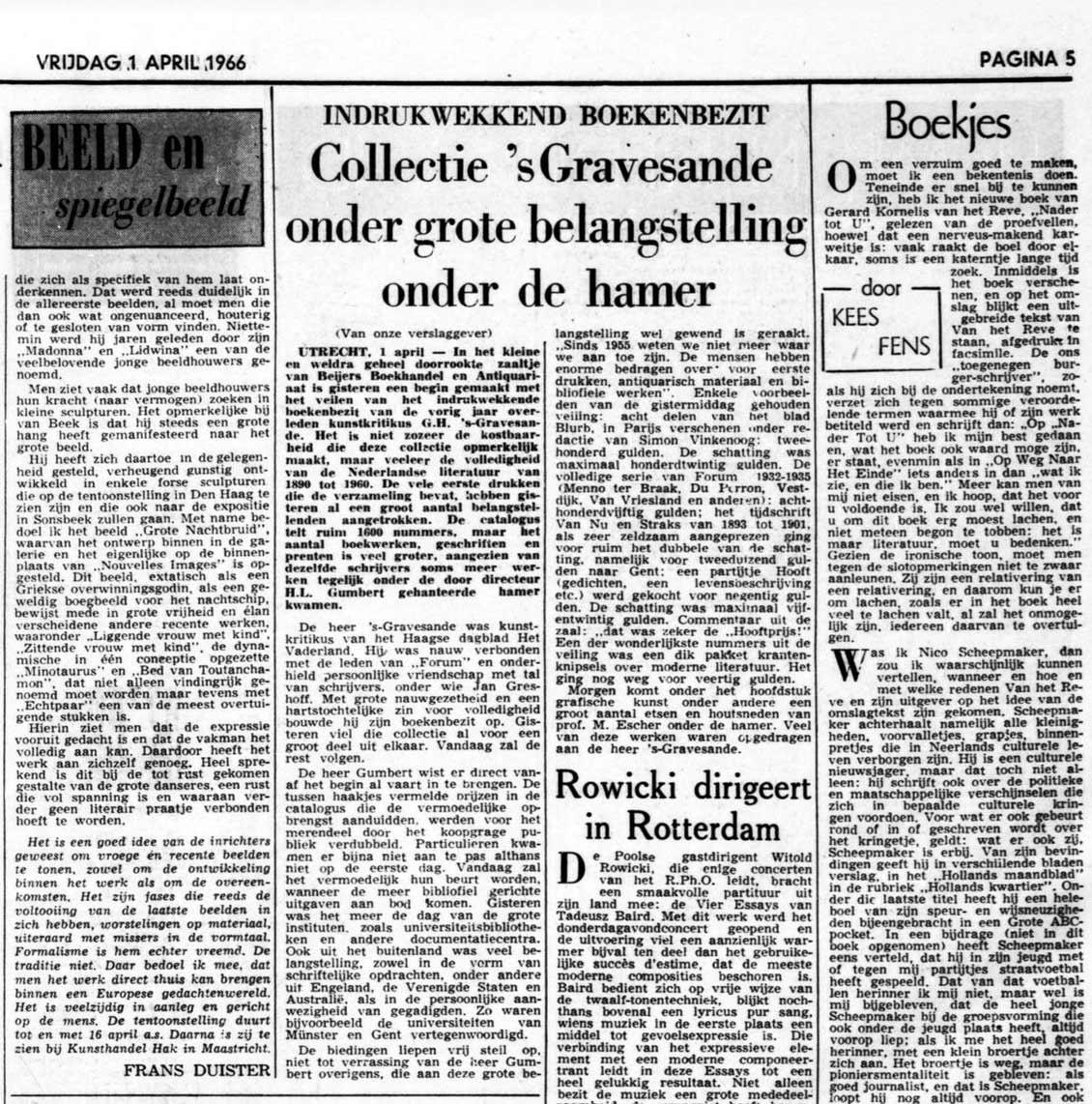
Source
[*] and [*****] Wim Hazeu, M.C. Escher, Een biografie, Meulenhoff, 1998, page 458
[**] M.C. Escher, His Life and Complete Graphic Work, edited by J.L. Locher, Abradale Press, 1982, page 36
[***] Het Vaderland, 10 September 1932
[****] Het Vaderland, 28 October 1933
This article is partly based on a publication by Fred Batten in the Yearbook of the 'Maatschappij der Nederlandse Letterkunde', Leiden, 1968-1969. E.J. Brill, Leiden 1971

Graphic Grandeur
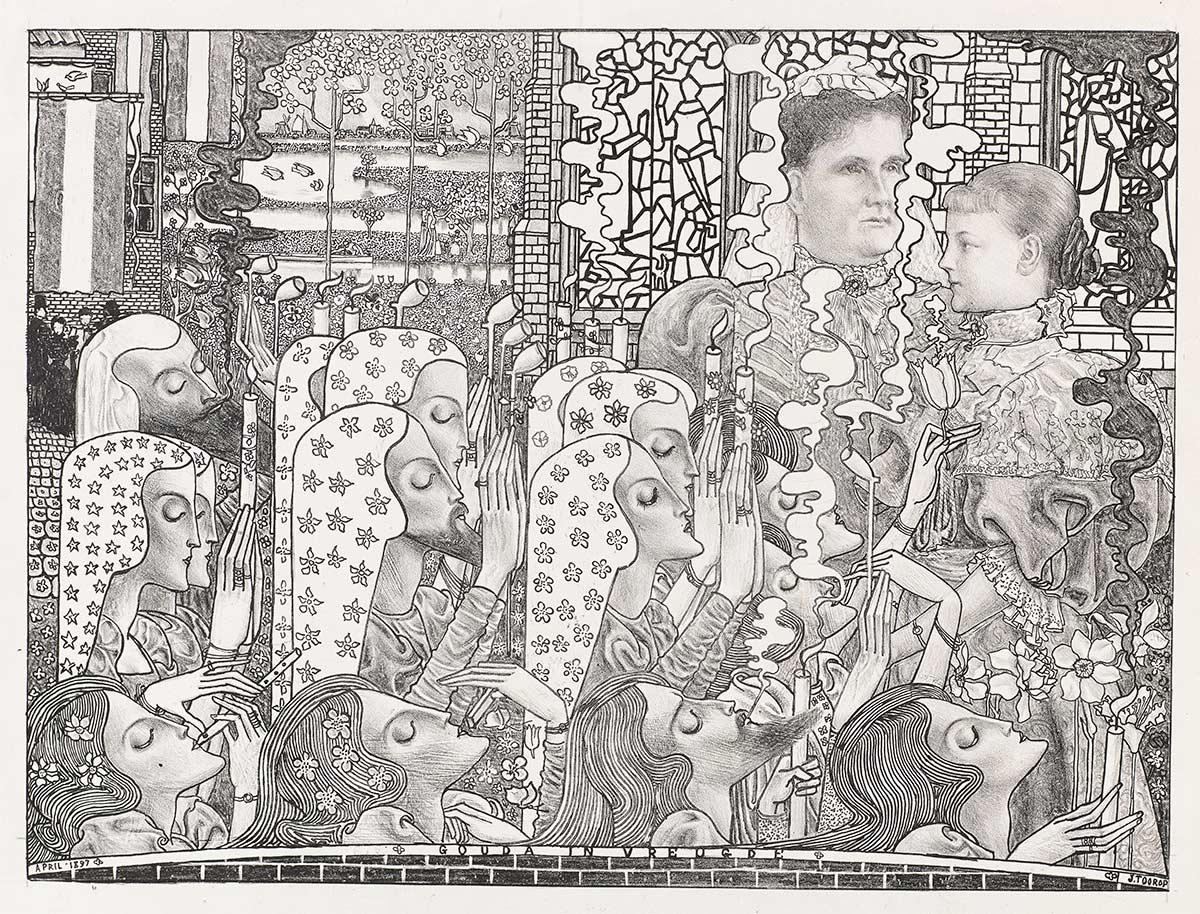
Graphic Grandeur
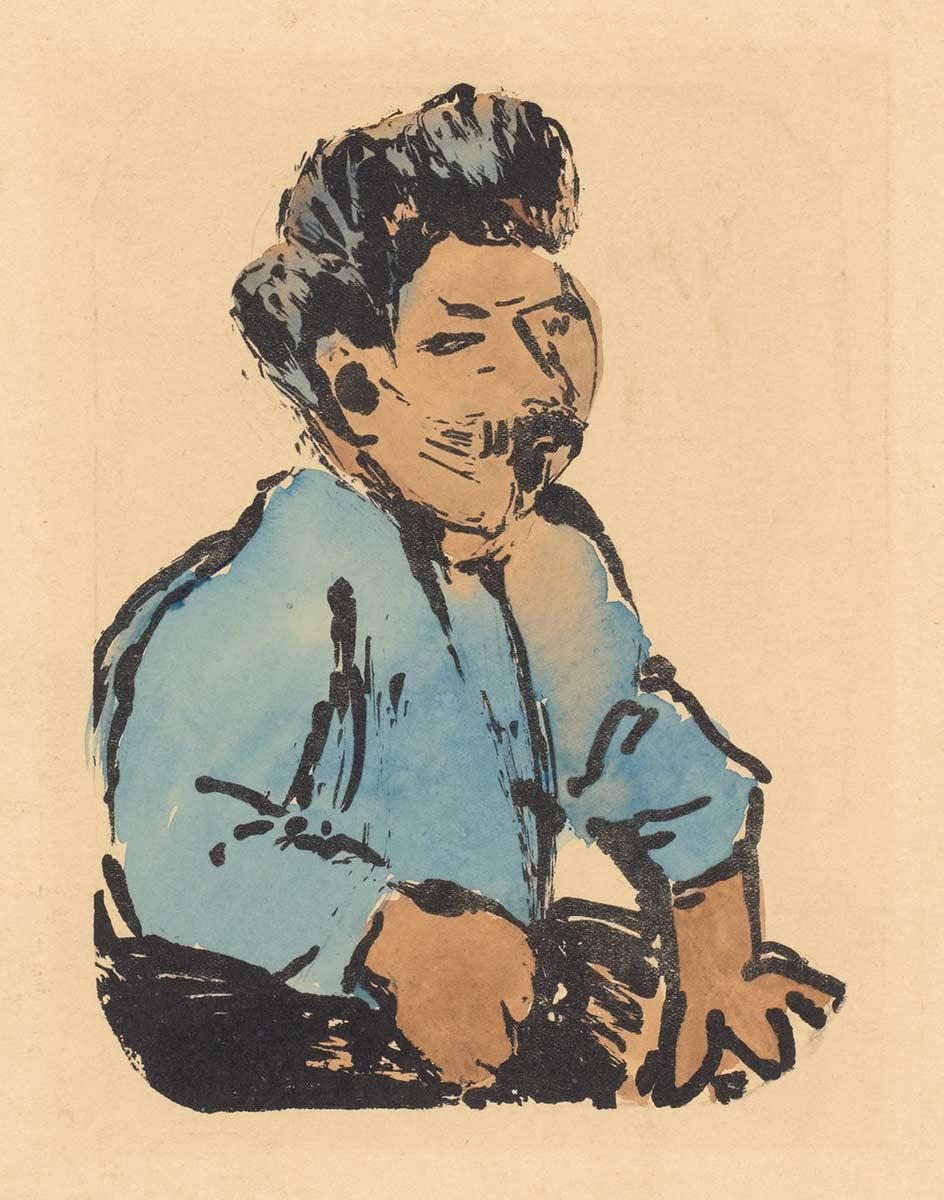
Graphic Grandeur